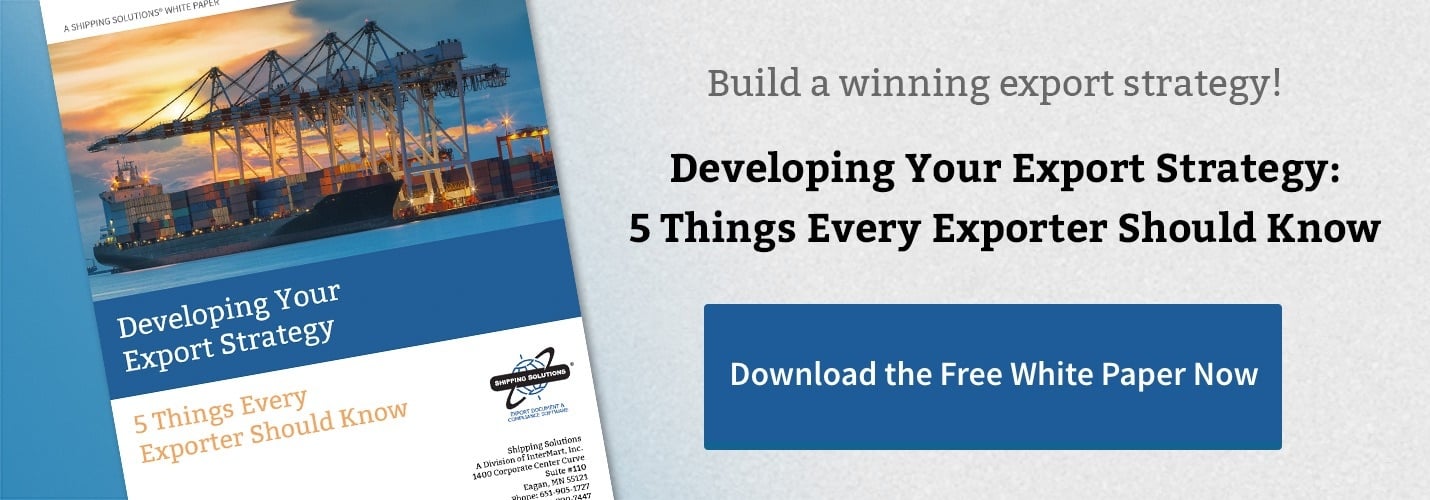The International Trade Blog Export Compliance
9 Questions to Save Time Qualifying International Prospects
On: February 10, 2016 | By:  David Noah |
5 min. read
David Noah |
5 min. read
 A few months ago, I shared a wealth of information from the U.S. Commercial Service directors and trade specialists in the article, 12 Pearls of Wisdom for New Exporters from the U.S. Commercial Service.
A few months ago, I shared a wealth of information from the U.S. Commercial Service directors and trade specialists in the article, 12 Pearls of Wisdom for New Exporters from the U.S. Commercial Service.
I thought one of those excellent suggestions deserved more of an explanation, so we talked with Glen Roberts, director of the Fresno and Bakersfield office in the Pacific South Network of the U.S. Commercial Service, to learn more about how a simple qualification questionnaire can help businesses qualify customers and save precious time. Here’s what he had to say:
Want to save time and money? Create a qualification questionnaire before you send out quotes.
So many small and midsized businesses need to save time. As we know, time is money. If your firm has a web presence, then you are most likely getting requests to send out quotes. Many times, the quote requests are no good, which is very cumbersome and a waste of time for companies trying to expand their markets.
What is a qualification questionnaire?
A qualification questionnaire is a simple set of questions you can send potential customers who request a quote. You can post the questionnaire on your website, send it to prospects via email—however works best for you and your company. Anyone can do it, and everyone should.
Why do you need one?
This questionnaire is thorough, it works for any industry, and it will keep you from wasting time and help you stay compliant.
It saves time.
The questionnaire will save you time by initializing an internal policy that requires everyone seeking a quote to complete it. Instead of sending quotes to parties who really don’t have any intention to purchase—which wastes your time—you can qualify people first to see if it’s worth your time to do a quote.
It helps you stay compliant.
The Export Administration Regulations (EAR) require every U.S. exporter to know their end buyers, end users, and end use. This questionnaire helps answer these questions by facilitating that very important first step: Who is this potential buyer?
If the prospective buyer is serious about purchasing your product, representing your company, or distributing your goods, they will take the time and complete the questionnaire in its entirety (or very close to it). If you receive a sloppy or incomplete questionnaire, then Roberts suggests moving on to the next order of business.
Your front-line salespeople should be sending out this questionnaire first—before they waste time (weeks or months depending on the project) working with clients that it turns out you can’t sell to.
A Sample Qualification Questionnaire
Potential customers should answer each question completely.
1. Company Background
With this information, you can do a cursory background check to verify if the person requesting a quote is legitimate.
- Company name
- Primary contact
- Title
- Street address, city, state, country
- Phone number
- Fax number
- Email address
- Website
2. Business Activity
The potential customer will note which of the following they identify as. Their selection can help you see if they are a good match for your company and if they’re involved in markets your product might work in.
- Retailer
- Wholesaler
- Sales agent
- Full stocking distributor
- Exporting company
- U.S.-based commissioned sales agent
- Export management company
- Other
3. Corporate Structure
The potential customer will answer the following:
- Is the company privately or publicly held?
- How many years has the company been in business?
- What countries do they service?
- How many employees do they have?
- How many sales representatives do they have, and what territories do they cover?
- Do they have a warehouse facility to stock product?
- Do they have a showroom or product display area?
- What are the company’s annual sales in U.S. dollars?
4. Principal Markets Served
5. Principal Accounts Handled
Have potential customers provide a complete listing of companies they currently represent, beginning with manufacturers, then followed by other categories that complement your products. This may seem like a strange step, but it’s important—in the Middle East, for example, a company will reach out to you to represent your product with exclusivity. Meanwhile, a relative may own and distribute your competitors’ goods. Unbeknownst to you, they are keeping out the competition because they won’t attempt to sell your goods and have no intention of moving your product. If you find out they have nothing complementary to your business and have no synergies, what makes them (or you!) think they can handle your product?
- Company name
- Contact
- Address
- Telephone number
- Fax number
- Email address
- Products
- Sales area
- Account age (years)
6. Customer Profile
List your company’s main customer accounts for each of the products and territories cited above. This will show if your products are complementary to the potential customer’s products and network.
- Customer
- Products
7. Financial Information
If you don’t want to use a background service to verify information about a potential customer, the next best thing to do is contact their banker. This is very effective, as the banker will generally tell you helpful information about the potential customer. You should ask the banker if the company is in good standing, how long they’ve been in business, and who they work with.
- Bank name
- Bank contact
- Bank address
- Bank phone and fax numbers
8. Additional Information
Is there anything else you would like to include about your company or your product?
9. Your Contact Information
Please enter the following information for the person who is filling out this form:
- Name
- Title
- Who is the primary contact for your company?
In Conclusion
That’s all! The great thing about this qualification questionnaire is it’s easily adaptable to any industry; you can use it for all customers as a part of your EAR compliance efforts and to determine if the price-quoting process is worth your time or not. This qualification questionnaire will save your company time and give you a better idea who you’re quoting to. It’s a simple, effective way to find good, qualified customers for your business.
Special thanks to Glen Roberts for his expertise in this article and for sharing the qualification questionnaire with us.

About the Author: David Noah
David Noah is the founder and president of Shipping Solutions, a software company that develops and sells export documentation and compliance software targeted at U.S. companies that export. David is a frequent speaker on export documentation and compliance issues and has published several articles on the topic.


